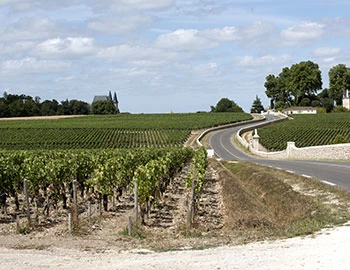Barossa Valley
Barossa Valley: well-proportioned abundance
The Barossa Valley is the epitome of Australian red wines with lavish fruit richness and focused strength. But the valley is not just a preferred terroir for Shiraz, Grenache, Cabernet, and co. – there are also huge winery facilities where grapes are processed from other cultivation areas in South Australia. Thus, the valley has become a center of Australian winemaking, bringing concentrated yet balanced crops into bottles.
White wines from Barossa Valley
Red wines from Barossa Valley
Of course there are also the Barossa Valley Crus –notable selections from individual vineyards or vineyard blocks, where ancient and gnarled, sometimes over 130-year-old Shiraz vines are rooted. These “Old Vines” were not grafted, but grow with their original roots. In addition to their age, this confers them with a particular potential for quality. Large wine houses also bring such rare vineyard selections to the market, demonstrating that the Barossa Valley is anything but a uniform wine growing area. Instead, it is a patchwork of highly diverse terroirs. Barossa Valley vintners can distinguish a Shiraz from Lyndoch in the south of the valley from one from Nuriootpa.
The art of the blend
Barossa cellar masters have particular command of the art of selection. Even when there are thousands of casks lying in the cellars – which here mostly consist of ground-level hangars – every single cask is regularly sampled and eventually assigned to a specific wine type. These blends have made the valley world famous. They often consist of grapes not just from the 12,500 hectares planted with vines in the Barossa Valley, but also from neighboring wine cultivation areas. These multi-region blends are given the broad designation of origin, “South Australia”.
Mediterranean climate
Barossa Valley is located approximately 60 kilometers north of Adelaide. A pronounced Mediterranean climate prevails here, with hot, dry summers and winters that are cool, but not cold. Precipitation is quite low, at 500 millimeters per year per square meter. The vines are rooted 250-550 meters above sea level in productive soil, with varying proportions of sand and clay depending on location. The sites in the south of the valley are cooler than those further inland to the north because of their proximity to the Pacific Ocean.
It was settlers from British Cornwall who started wine cultivation here in 1840. A short time later, German immigrants from Silesia and Prussia came as well, leaving their homelands because of persecution for their Lutheran faith. Starting in 1890, the first Barossa wines were exported to England. To this day, the region has been able to maintain its leading role in the Australian wine industry.









